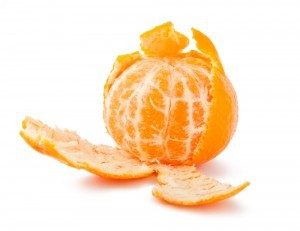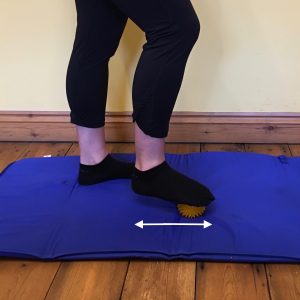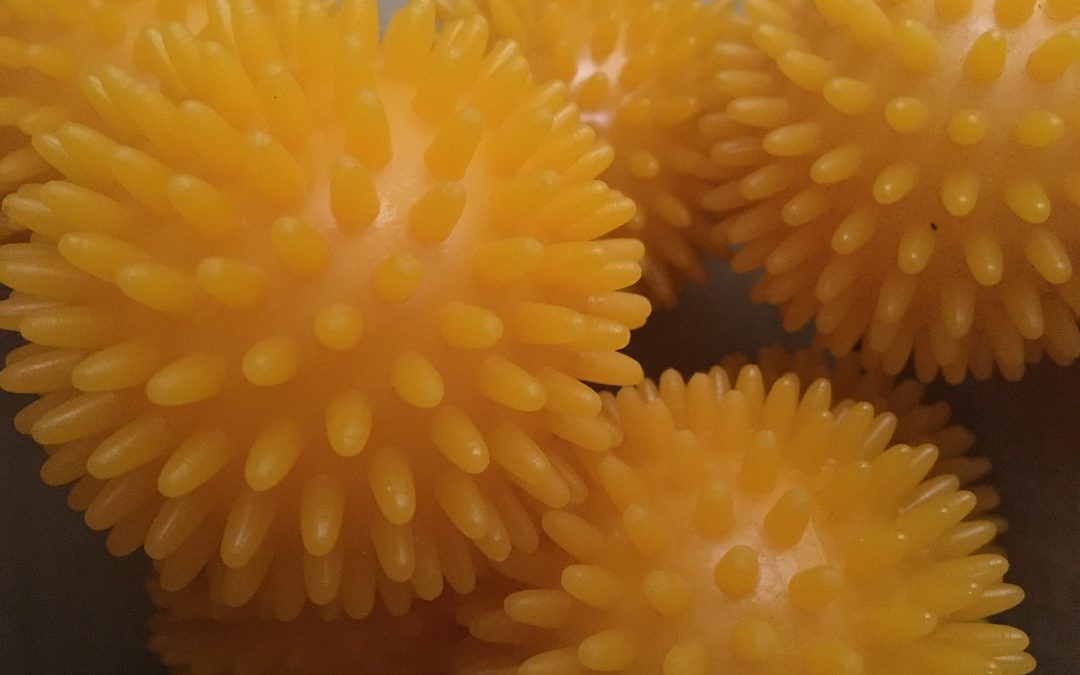We often use spikey balls in my Pilates classes to release tension in the body and help us to move more easily. It’s an easy tool to use and many of my class members like noticing the immediate effects…..even if there are some moans and groans whilst using the spikey balls!
The spikey ball is a self massage tool that helps to hydrate fascia and unstick areas where a knot has formed.
What is fascia?
 Fascia is a clingfilm-like substance that wraps all around our muscles, bones, nerves, arteries, veins and internal organs (heart, lungs, brain, spinal cord). It’s a sensory organ, holds us together and connects the entire body from head to toe. If you imagine an orange, fascia is similar to the white layer beneath the peel that surrounds each segment.
Fascia is a clingfilm-like substance that wraps all around our muscles, bones, nerves, arteries, veins and internal organs (heart, lungs, brain, spinal cord). It’s a sensory organ, holds us together and connects the entire body from head to toe. If you imagine an orange, fascia is similar to the white layer beneath the peel that surrounds each segment.
Healthy fascia is flexible, supple and glides easily but it can easily become restricted. When fascia is restricted it becomes a sticky matted web, forms knots and flexibility/mobility is decreased – overtime this can lead to aches and pains. Lack of movement, poor posture, repetitive movements, physical trauma (e.g car accident, a fall) and emotional trauma are just some of the ways fascia can become restricted.
Looking after your fascia
Hydrated fascia is happy fascia!
Imagine a sponge that has dried out, it becomes brittle and hard. When the sponge is wet and well hydrated it is springy, resilient and can move in all directions smoothly and effortlessly. You can wring it out and twist it but it is difficult to break.
Fascia is similar to a sponge.
Drinking enough water is helpful to keep fascia hydrated but it’s also important to ‘wring the sponge out of old water’ and ensure the water can get to the sponge (fascia) through a good irrigation system.
Stretching, moving and myo-fascial release all help to keep fascia moving smoothly and effortlessly.
Myo-fascial release can be done through sports massage or self myofascial release, which uses tools like the spikey ball, a tennis ball or foam roller.
Spikey Ball Exercise
 This exercise helps to release the plantar fascia, which is the thick ligament that connects your heel to the front of the foot and helps you to walk. It’s an easy exercise I get my class members to do at the start of the class, they can feel the immediate effects and it helps with their balance in some of the standing Pilates exercises.
This exercise helps to release the plantar fascia, which is the thick ligament that connects your heel to the front of the foot and helps you to walk. It’s an easy exercise I get my class members to do at the start of the class, they can feel the immediate effects and it helps with their balance in some of the standing Pilates exercises.
- Slowly roll the ball from the toes to the ball of the foot and then continue to repeat.
- Push down into the ball and apply pressure as you roll.
- If you find any sticky or tender points then stop and hold for 20 seconds with pressure.
- Roll for a couple of minutes on one foot, repeat on other side.

